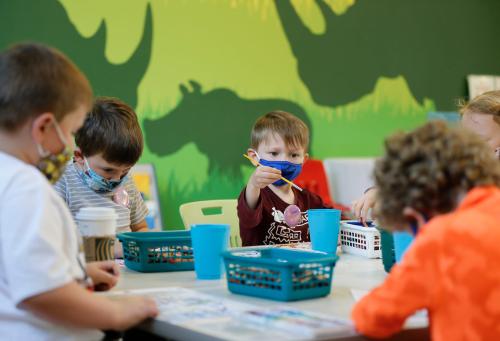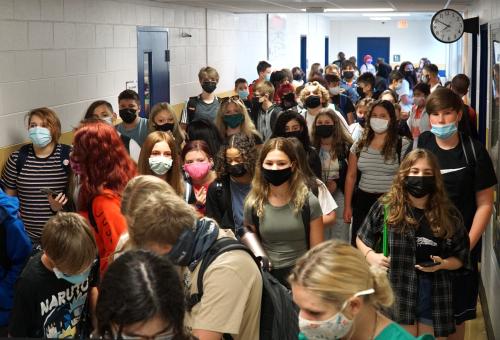Over the past two decades, partnerships between agencies primarily conducting research and those primarily administering education have been transforming both research and practice in education. Even more, the partnerships themselves are also changing with time. Often cited as a potential mechanism to bridge the longstanding gap between education research and practice, research-practice partnerships (RPPs) also hold great promise for those interested in disrupting power asymmetries, centering equity, and building new pathways for knowledge to flow. Whether and how RPPs realize these important aims are questions we regularly contend with at the National Network of Education Research-Practice Partnerships (NNERPP), a professional learning community for RPPs of all types, models, and approaches in the education sector. Together with our 50-plus members, we have engaged in a number of critical conversations resulting in deep reflections on the various aspects of partnership work, lessons on defining RPPs, and new ideas about how to know whether partnership work is making a positive impact.
Despite these advancements, the field of RPPs is still nascent. As such, it is a dynamic space, with new partnerships emerging, existing partnerships adapting, and some partnerships ending. What we define as “RPPs” is itself a dynamic concept, shaped by those doing the work. Recently, some colleagues of mine put out a terrific new report on this very topic, which offers a comprehensive, field-sourced overview of where things stand with RPPs. They include an updated definition of RPPs based on a synthesis of partnership components important to those in the field. Rather than rehash what is in that report, here I share some reflections on how the definition has changed and what it means for those of us working in (rather than researching) RPPs.
RPPs: Then and Now
A formal definition of education RPPs was first introduced in a 2013 white paper supported by the William T. Grant Foundation. Revisiting that definition now leads me to a few reactions comparing where we were then versus now.
First, the authors in the 2013 paper characterized RPPs as partnerships involving only school districts on the “practice” side. Based on the types of partnerships emerging during the early 2010s (i.e., modeled after the success of the UChicago Consortium on School Research, which featured a university and local school district working in partnership on education issues), this was largely accurate in terms of what was visible. Today’s partnerships, in contrast, involve all types of organizations, including nonprofit agencies, universities, museums, research institutions, schools, districts, state education agencies, community groups, and so on.
Second, the early definition also introduced three types of partnerships:
- Research alliances, similar to the UChicago Consortium;
- Design-based implementation research partnerships, coming from a learning sciences orientation; and
- Networked improvement communities, using the principles of improvement science to engage multiple practice-side organizations in improvement aims.
Although there are still examples of all three types in the field today, we have since moved away from rigidly categorizing RPPs in this way, given the variety of partnership models in existence that both mix and transcend these definitions.
Third, it’s interesting to see how the concept of “mutualism” in RPPs has evolved as well. The early RPP definition emphasized the idea that both research and practice partners would benefit from collaborative work. In our experience, we have seen many RPPs struggle with whether their work was truly “mutually beneficial” (e.g., since producing a peer-reviewed journal article based on partnership work is still mostly a benefit that accrues to research-side partners). As you’ll see in the updated definition below, “mutualism” has since been dropped, though keeping all partners meaningfully engaged is still a priority.
In July 2021, a current landscape scan of the RPP field and an updated definition was released by the William T. Grant Foundation, based on extensive field-sourced information from individuals working in RPPs. Here’s the definition of RPPs provided (from page 5):
“A long-term collaboration aimed at educational improvement or equitable transformation through engagement with research. These partnerships are intentionally organized to connect diverse forms of expertise and shift power relations in the research endeavor to ensure that all partners have a say in the joint work.”
This updated definition is well aligned with what we, at NNERPP, are seeing across our member RPPs, and we are excited to integrate the definition in our work. A few phrases from this new definition stand out for their immediate implications for people engaging in the “practice” of RPPs.
For those just starting to think about partnership work, the new definition might serve as a checklist of sorts—and a good starting point. For example, teams might ask themselves: Do we want to engage in a long-term collaboration? How might we go about connecting diverse forms of expertise? Are we creating the structures and opportunities needed to shift power relations among our partners?
More advanced partnerships might use this definition to assess how well they are attending to the foundational elements of their collaborations. For example, teams might question: What does it mean to ensure that all partners have a say in the joint work, and are we there? Whom do we consider a partner and, importantly, who is not a partner? Why? How do we make sense of a “long-term” collaboration with short-term projects within it?
Finally, I also see the new definition anchoring our conversations around RPP effectiveness. We have come a long way in understanding what makes RPPs “work” well, but as the field itself evolves, so too will our knowledge around evaluation of these efforts. In the case of the new definition, a set of critical evaluation-like questions may include: What role do “diverse forms of expertise” play in helping move the partnership toward its stated aims? What goals do partnerships identify within the broader aims of “educational improvement” or “equitable transformation”? How do RPPs organize themselves in service of those goals? What does a first-year partnership look like along the various principles articulated, versus a three-year or five-year partnership?
Based on this new definition, NNERPP has updated its membership application, inviting teams interested in joining NNERPP to reflect on how their own work realizes what we see as the key elements of the updated definition. Specifically:
- Partnerships must have an intention of being long-term;
- Partnerships must prioritize connecting diverse forms of expertise and shifting power relations in their research-related efforts to ensure all partners have a say in the joint work; and
- Partnerships must be organized to identify practice-centered candidates for improvement, to investigate these topics, and to work collaboratively to develop solutions for improving outcomes.
As we’ve seen with the shift in how the field has defined RPPs, definitions are not static, nor should we want them to be. They evolve based on the ideas and experiences of members from the field, who themselves change over time. What is helpful about definitions, though, is that they capture succinctly a sense of where we are in that moment, and they can help us understand the boundaries of the “thing” itself.
In our case, the ongoing effort to define RPPs has both guided the work of those inside the field and communicated to those outside of it. Given these observations, we are eager and curious to see how this definition continues to evolve as the people and priorities of RPPs continue to change.






Commentary
The evolving world of education research-practice partnerships
October 28, 2021